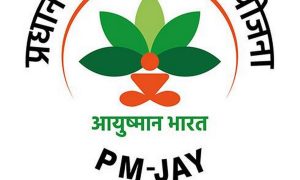Fund houses define solution-oriented funds as those that facilitate investments for building a corpus for meeting future expenses such as retirement, or education and marriage of children.
Individuals looking to invest in funds that will help them meet certain set goals have the solution-oriented funds category to consider for fulfilling their requirements.
Fund houses define solution-oriented funds as those that facilitate investments for building a corpus for meeting future expenses such as retirement, or education and marriage of children. They are classified primarily under two categories ― Retirement Fund and Children’s Fund.
These come with a lock-in period of at least five years, or till the child attains age of majority, or till retirement (whichever is earlier). This is to inculcate a sense of financial discipline and help investors resist the temptation of redeeming at an early stage, says the UTI MF website
Read More:- Paytm Posts Updated Shareholding For Q4 FY23, FPI Shareholding Almost Doubles
Fund managers of such schemes work to build a portfolio by keeping in mind the risk aptitude of the investor. This is to generate the highest possible yield in line with expectations.
However, the category constitutes a minuscule proportion of the larger open-ended universe, with just Rs 32,333.53 crore in net assets managed as of March 31, according to Amfi data. This is just 0.83% of the entire AUM in the open-ended universe.
“The AUM size of both the category has not really grown, and the proportion to the overall AUM has been low. One could assume people are not investing in these funds for solutions, but because they have money. This could be because most are investing in different product categories towards their goal of retirement or children’s education, but without the label of retirement/children’s fund,” says Kalpen Parekh, MD and CEO of DSP MF.
Parekh says asset allocation could remain the same in either of the funds one chooses to invest in. Equity funds, though without the ‘solution-oriented’ tag, may also help with the objective of growing wealth and ensuring returns over time that beat inflation.
The retirement category showed a jump of 207% in net flows in March; the increase was just 27% in February and 113% in January over the preceding month, according to data by Morningstar Research. Similarly, for the children’s category, March showed a 67% jump, while February registered a 23% drop in flows. January witnessed a meagre 12% increase.
Data suggest the retirement category has a total fund size of almost Rs 18,000 crore, while the figure for the children’s category stands at over Rs 14,000 crore.
Dhirendra Kumar, founder and CEO of Value Research, said the surge in March flows was on account of year-end investments for tax exemptions. “These funds don’t offer anything special. Holding onto any fund for 15 years could make it similar to any retirement fund.”
Investors should be cautious while considering retirement funds, Kumar pointed out. This is because for any retirement fund with a horizon of 15 years or more, one should predominantly allocate their holdings to equity, and increase the proportion of fixed income, say, five years before retirement. As a result, he explains, investors could go for other products that offer higher returns or a better allocation.
In addition, the industry has not been able to properly pitch the category to investors or show any USP, according to experts.
According to Nilesh Shah, MD and CEO of Kotak MF, the industry needs to spread more awareness about this category by marketing the products better. “The insurance industry has done a better job in selling products that come with returns, thus connecting with their customers over long-term financial goals,” he said, adding: “The customer gets interested in aspects such as returns and tax benefits, which they emphasise while selling.”





































